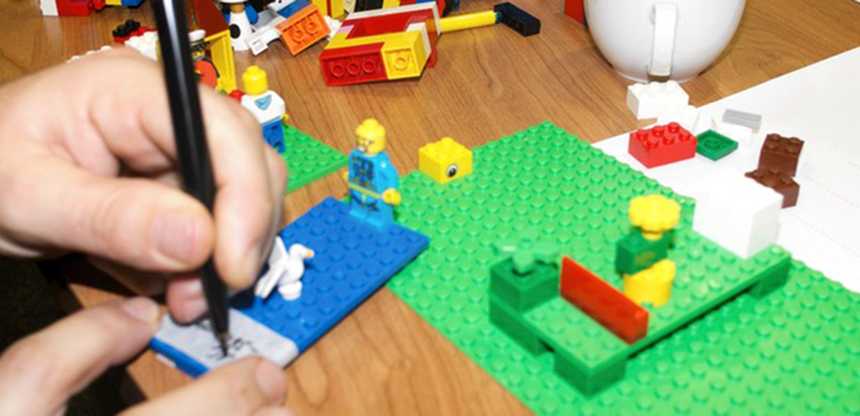Rapid-Prototyping - a powerful research tool
Published April 11, 2016

What does prototyping have to do with user research? Doesn’t it already have its role as a step in design thinking, after ideation, when the design team creates “rough and ready” visualizations of possible solutions? Well, we are not at the d.school anymore and prototyping is too versatile instrument to be reserved just for the visualization of design ideas.
Get insights with prototyping
User research can get as fuzzy as human nature. Observations and interviews frequently point to gaps between customers’ statements and actions. That’s a good moment to ask your customers to explore their current state (touch point with your product, as an example) through their hands. Just provide them with some prototyping material, space and time, then sit back and observe. The power of “thinking with the hands” helps your test users to frame problems and desires they had no words for. Such a user created prototype gives you a deep insight into the mental model of your users and is a good basis for an interview. Warning: Do not over-interpret: just ask your user to describe what they see and document it well.
Storytelling with prototyping
Nothing triggers humans as much as a good story! Narrative helps us to create our own opinions, to realize our fears and wishes. Good user research always engages users’ emotional context. That could get quite tricky: certain adults are very conscious about acting rationally and thoughtfully. Prototyping will bring them away from this controlled state. In our prototyping sessions, we have experienced adults being so involved in the creating game that they dropped the mask of rationality and discovered their deepest needs. This “aha” moment emerges as part of the prototyping description and gives you a strong idea about your users’ context and the emotional factors influencing their behavior.
Prototyping and design thinking
The good thing about design thinking is that it could just be described as a “state of mind” rather than a “process to follow”. Thanks to such creative heads and hearts as IDEO, design thinking has been tested in different sectors, and developed and modified constantly. Prototyping’s capacity to frame and visualize unconscious needs and feelings makes this tool appear today in all steps of design thinking. This is how David Kelley from IDEO puts it: “The reason for prototyping is experimentation—the act of creating forces you to ask questions and make choices. It also gives you something you can show to and talk about with other people […] a prototype is just an embodiment of your idea.”
Conclusion
Rapid prototyping is a very flexible and joyful process. All you need to start are simple materials like cardboard, scissors, Lego bricks or coffee cups—not elaborate or expensive. Rapid prototyping means translating ideas and vague thoughts into designs very quickly. But it’s not only your ideas and thoughts which are worthy of expression. Ask your future users and customers to visualize their point of view, and your product or service will get strong benefits from this experiment.